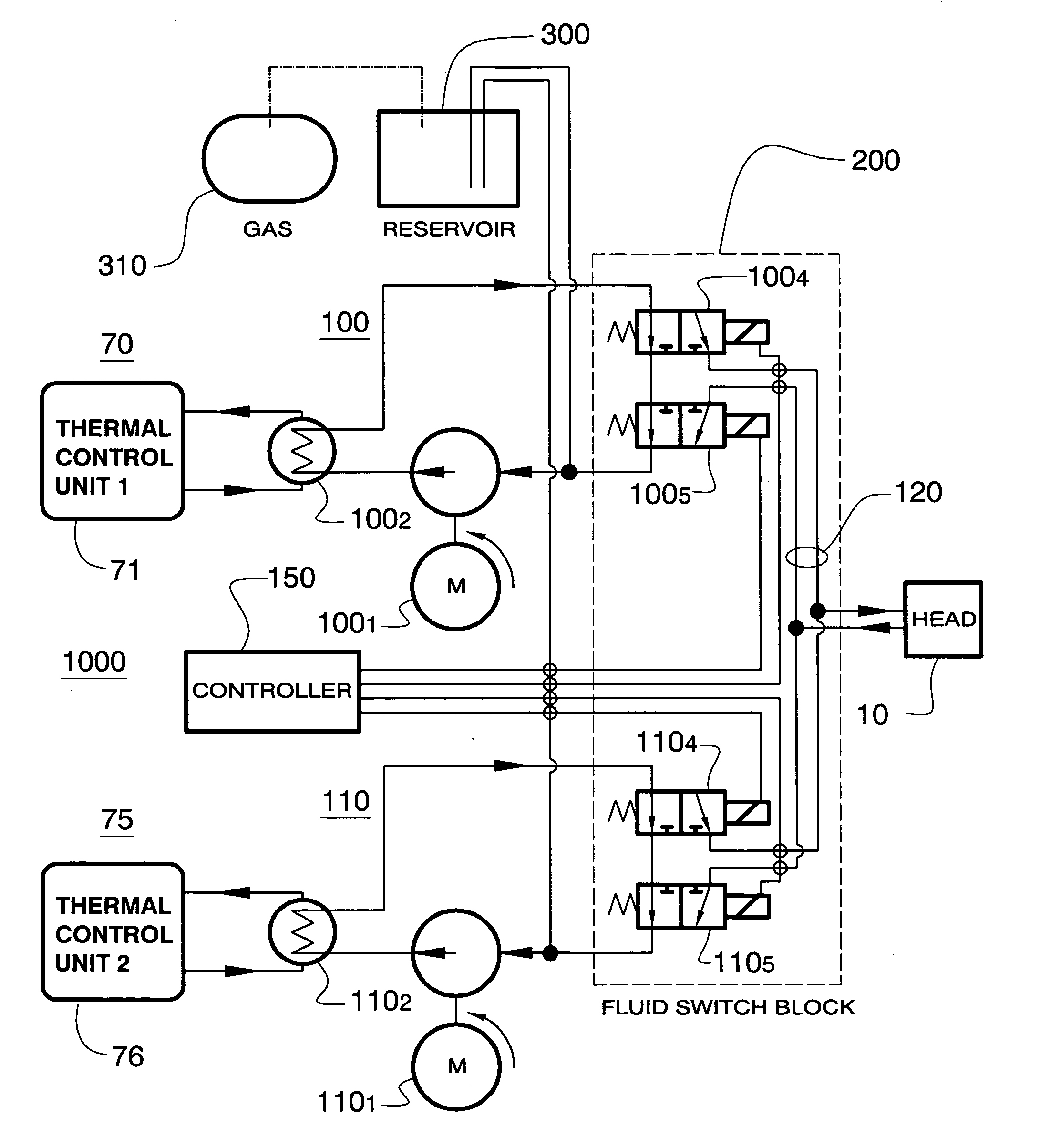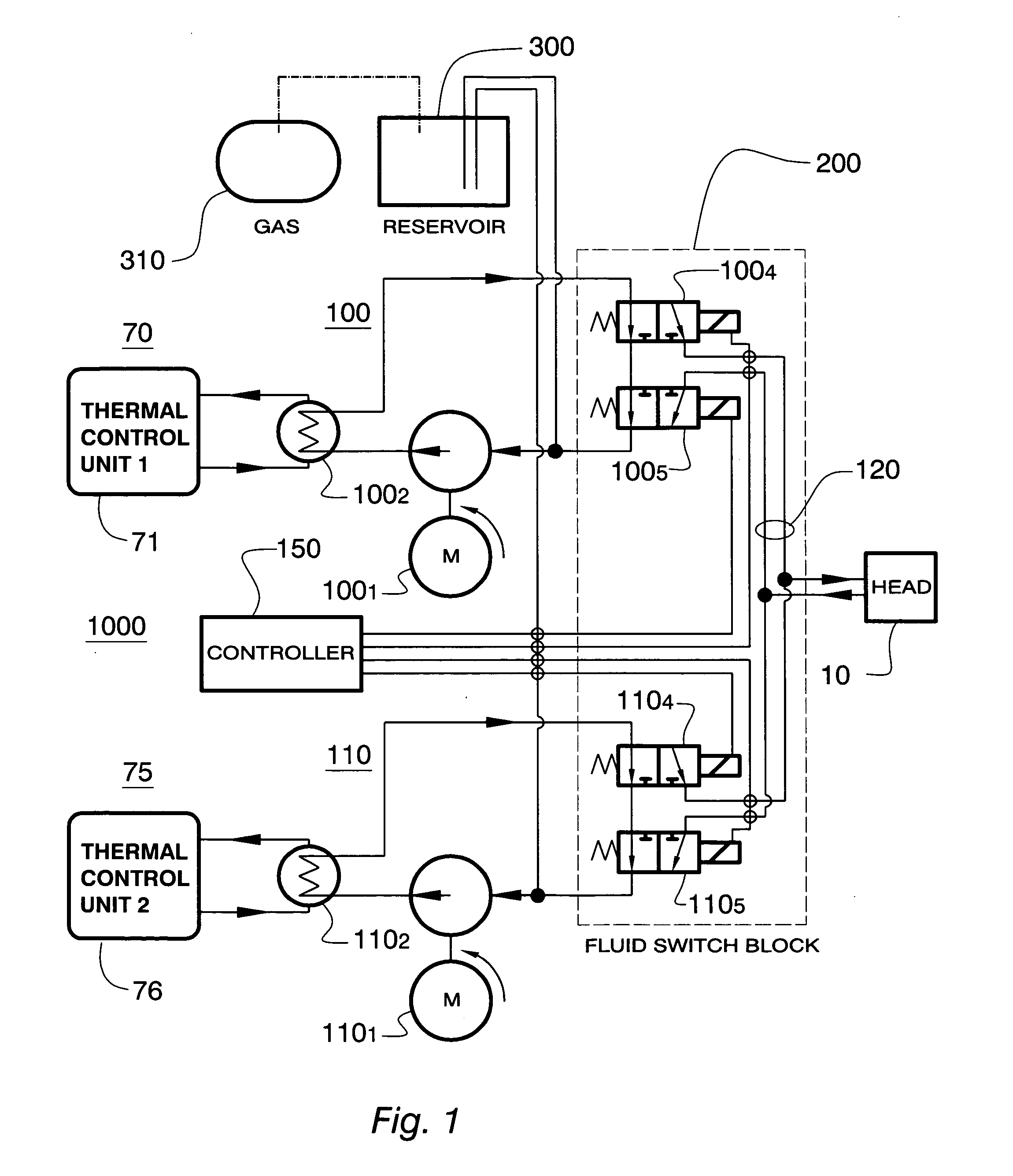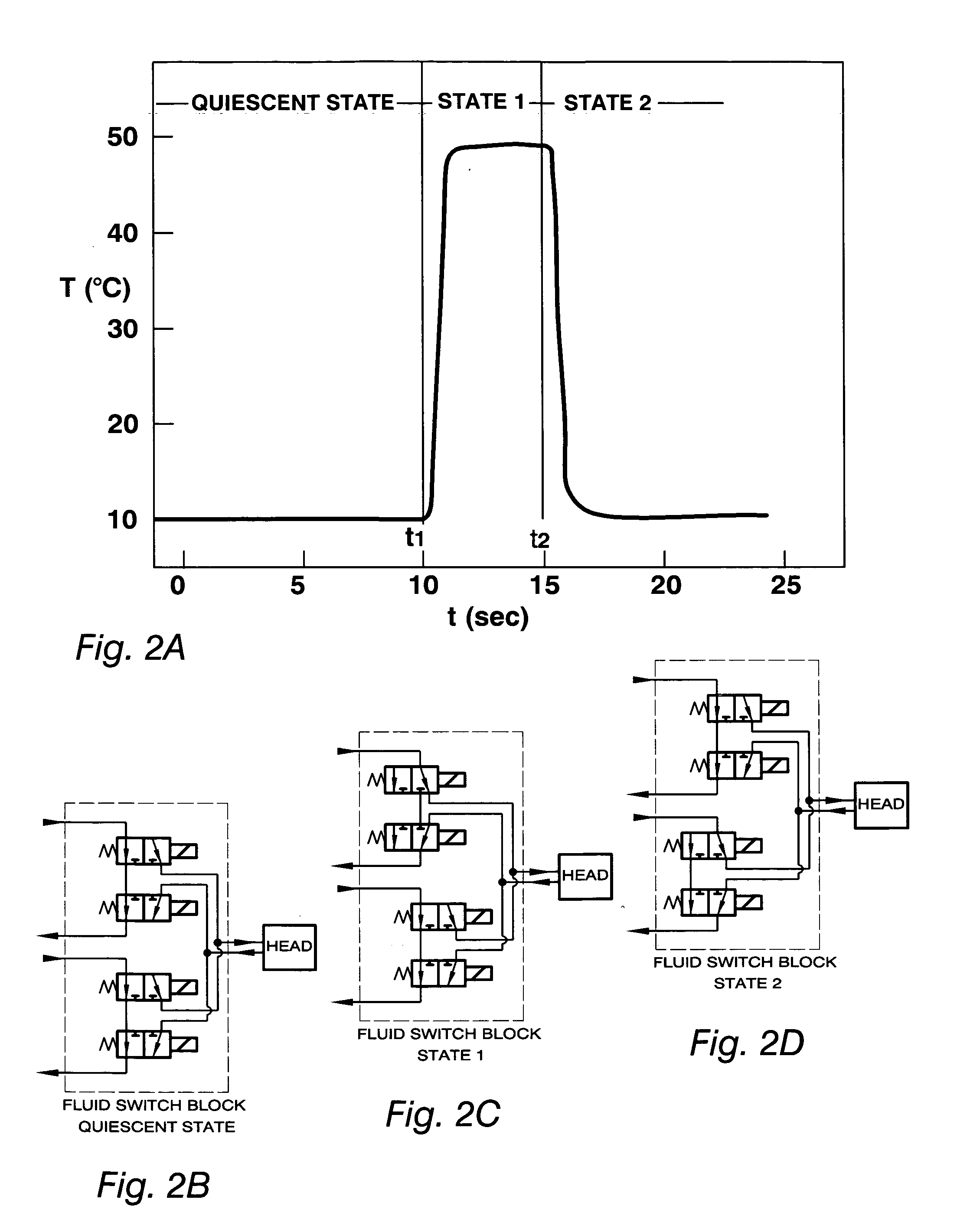Method and apparatus for setting and controlling temperature
a technology of temperature control and temperature control, applied in the direction of domestic cooling apparatus, lighting and heating apparatus, instruments, etc., can solve the problems of failing to pass defective ics as good units, increasing the difficulty of maintaining the temperature of the ic at a fixed value, and testing failure of nominally good ics
- Summary
- Abstract
- Description
- Claims
- Application Information
AI Technical Summary
Benefits of technology
Problems solved by technology
Method used
Image
Examples
Embodiment Construction
[0023]One or more embodiments of the present invention overcome problems in the prior art, and provide apparatus for setting and controlling temperature of a device under test with improved efficiency and thermal settling time. In accordance with one or more such embodiments, a temperature set and control apparatus incorporates a plurality of thermal control circuits, each flowing thermal transfer fluid at different temperatures. The temperature of a thermal head is set by switching a flow of thermal transfer fluid of a desired temperature through the thermal head while the thermal transfer fluid in each thermal control circuit continues to flow, whether or not thermal transfer fluid in the thermal control circuit is switched to flow through the thermal head. As such, and in accordance with one or more such embodiments, uninterrupted flow in each thermal control circuit overcomes a limitation of the prior art in that the thermal transfer fluid in each thermal control circuit is main...
PUM
 Login to View More
Login to View More Abstract
Description
Claims
Application Information
 Login to View More
Login to View More - Generate Ideas
- Intellectual Property
- Life Sciences
- Materials
- Tech Scout
- Unparalleled Data Quality
- Higher Quality Content
- 60% Fewer Hallucinations
Browse by: Latest US Patents, China's latest patents, Technical Efficacy Thesaurus, Application Domain, Technology Topic, Popular Technical Reports.
© 2025 PatSnap. All rights reserved.Legal|Privacy policy|Modern Slavery Act Transparency Statement|Sitemap|About US| Contact US: help@patsnap.com



